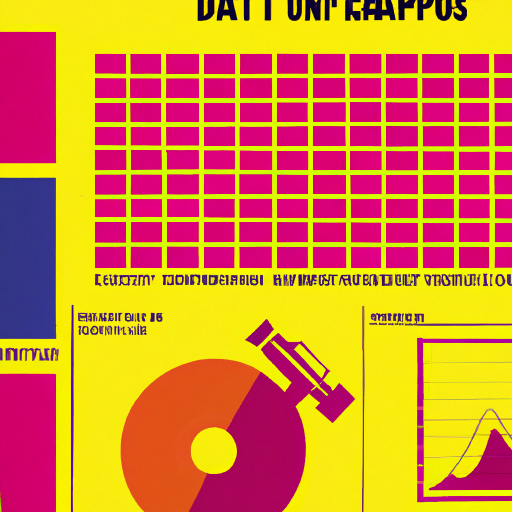
-
Table of Contents
- Visualizing Data: Infographics for Information Communication
- The Power of Visuals in Communication
- The Benefits of Infographics
- Best Practices for Creating Infographics
- 1. Define your objective and target audience
- 2. Gather and analyze data
- 3. Choose the right visual elements
- 4. Keep it simple and concise
- 5. Design for readability and aesthetics
- 6. Test and iterate
- Real-World Examples
- 1. The Evolution of Mobile Phones
- 2. The Impact of Plastic Pollution
- 3. The Benefits of Exercise
- Summary
Visualizing Data: Infographics for Information Communication

When it comes to conveying complex information in a concise and engaging manner, infographics have become an invaluable tool. These visual representations of data have gained popularity across various industries, from journalism to marketing, as they effectively communicate information and captivate audiences. In this article, we will explore the power of infographics in information communication, examining their benefits, best practices, and real-world examples.
The Power of Visuals in Communication
Humans are visual creatures. We process visual information faster and retain it longer than text-based information. This is why incorporating visuals into communication strategies can significantly enhance the effectiveness of conveying messages. Infographics, with their combination of text, images, and data visualizations, offer a powerful way to present complex information in a visually appealing and easily digestible format.
According to a study conducted by the Wharton School of Business, people remember only 10% of information they hear after three days. However, when a relevant image is paired with that information, retention increases to 65%. This staggering difference highlights the impact visuals can have on information recall and comprehension.
The Benefits of Infographics
Infographics offer numerous benefits that make them an ideal choice for information communication:
- Enhanced comprehension: Infographics simplify complex information by breaking it down into easily understandable visual elements. By using charts, graphs, and icons, they allow viewers to grasp key concepts at a glance.
- Increased engagement: Infographics are visually appealing and capture attention. They can be shared on social media platforms, websites, and presentations, making them an effective tool for engaging audiences and driving traffic.
- Better information retention: As mentioned earlier, visuals significantly improve information retention. By presenting data in a visually stimulating way, infographics help viewers remember and recall information more effectively.
- Improved storytelling: Infographics enable storytellers to present information in a narrative format. By combining text and visuals, they create a compelling story that resonates with the audience.
- Increased reach and shareability: Infographics are highly shareable, making them an excellent tool for increasing brand exposure and reaching a wider audience. When viewers find an infographic valuable, they are more likely to share it with their networks, leading to increased visibility.
Best Practices for Creating Infographics
While infographics offer numerous benefits, creating an effective one requires careful planning and execution. Here are some best practices to consider:
1. Define your objective and target audience
Before diving into the design process, clearly define the objective of your infographic and identify your target audience. Understanding your goals and audience will help you determine the most appropriate visual style, tone, and level of complexity for your infographic.
2. Gather and analyze data
Infographics are data-driven, so it’s crucial to gather accurate and relevant information. Conduct thorough research and ensure that your data comes from reliable sources. Analyze the data to identify key insights and trends that you want to highlight in your infographic.
3. Choose the right visual elements
Select visual elements that effectively represent your data and support your narrative. Use charts, graphs, icons, and illustrations to convey information in a visually appealing way. Ensure that the visuals are clear, easy to understand, and aligned with your brand’s visual identity.
4. Keep it simple and concise
Avoid overwhelming your audience with too much information. Keep your infographic concise and focused on the key message you want to convey. Use clear and concise language, and avoid jargon or complex terminology that may confuse your audience.
5. Design for readability and aesthetics
Ensure that your infographic is visually appealing and easy to read. Use a clear and legible font, appropriate font sizes, and a color scheme that enhances readability. Pay attention to the layout and spacing to create a visually balanced design.
6. Test and iterate
Before finalizing your infographic, test it with a sample audience to gather feedback. Iterate based on the feedback received to improve the clarity, effectiveness, and overall impact of your infographic.
Real-World Examples
Let’s explore some real-world examples of infographics that effectively communicate information:
1. The Evolution of Mobile Phones
This infographic traces the evolution of mobile phones from their inception to the present day. It uses a combination of timelines, icons, and images to showcase the major milestones in mobile phone technology. The infographic effectively communicates a complex history in a visually engaging and easy-to-understand format.
2. The Impact of Plastic Pollution
This infographic highlights the devastating impact of plastic pollution on the environment. It combines statistics, charts, and illustrations to convey the scale of the problem and the urgency for action. The use of visuals helps evoke an emotional response and encourages viewers to take action against plastic pollution.
3. The Benefits of Exercise
This infographic presents the numerous benefits of regular exercise on physical and mental health. It uses a combination of icons, charts, and text to highlight the positive effects of exercise. The infographic effectively communicates complex scientific information in a visually appealing and accessible manner.
Summary
Infographics are a powerful tool for information communication. They enhance comprehension, increase engagement, improve information retention, enable storytelling, and increase reach and shareability. By following best practices such as defining objectives, choosing the right visual elements, and keeping the design simple and concise, infographics can effectively convey complex information in a visually appealing and easily digestible format. Real-world examples demonstrate the effectiveness of infographics in communicating information across various topics. Incorporating infographics into your communication strategy can help you captivate your audience and make a lasting impact.
